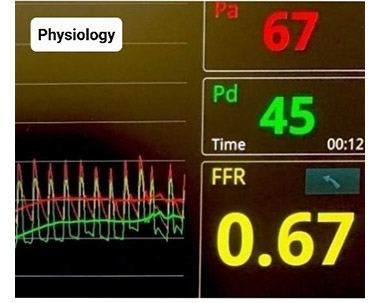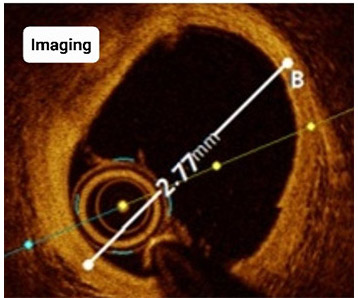So you or someone you know has been diagnosed with artery blockages. What comes next? Here, DR PINAKIN V PAREKH of The Harley Street Heart & Vascular Centre explains the importance of fully understanding your coronary artery disease diagnosis and knowing your treatment options for an artery blockage, which may include medication or angioplasty.

With CT coronary angiograms increasingly becoming the investigation of choice for screening high-risk individuals and evaluating patients with chest pain, it is useful – and now easier than ever – to understand the implications of abnormal findings and the various management options.
Artery blockages vary in the severity of narrowing, extent of distribution and composition of the plaque. Accompanying data included in the reports is the calcium score, which indicates the degree of hardening in the artery walls.
Driving down cardiovascular risk factors for artery blockages
A key in artery blockage treatment is to aggressively control the four main modifiable risk factors: smoking, high cholesterol, hypertension and diabetes. To prevent the artery blockage from progressing, patients must meet stringent control targets.
To achieve this, in addition to the usual dietary control and regular physical activity recommendations, I advise my patients on the following three points:
#1 The LDL-cholesterol targets are dynamic and vary from patient to patient. With calcium and plaque disease already evident, the targets can be as low as 1.4 mmol/l (55 mg/dl). Patients can be misguided by simply adhering to the reference ranges on blood test results. That’s because they are general and not individualised.
#2 The benefits of medications to control cardiovascular risk factors far outweigh the minor risks posed. Patients often try to delay starting medications and rely on lifestyle modifications to achieve the targets. However, this is often suboptimal and unsustainable in the long run.
#3 Such medications do not pose a “chronic addiction” risk and can be stopped at any time if the patient wishes. However, they do not cure but rather control the cardiovascular risk factors. Cessation would mean being exposed to the pre-existing risks again.
What is angioplasty and do you need it?
As a modern interventional cardiologist, when deciding whether to use angioplasty (often with stenting) as a treatment for artery blockage, I thoroughly discuss its potential benefits with my patients. Those with severe coronary artery disease who have angina or weakened heart function can benefit from angioplasty.
However, the role of preventive stenting in otherwise well patients with moderate to severe coronary artery disease is not well established. In such cases, optimal medical therapy, as outlined earlier, is the mainstay of treatment for artery blockage. Advances in coronary interventions have provided modern tools that offer further artery blockage treatment directions for long-term outcomes.
I discuss the following three points regarding angioplasty with my patients:
#1 Coronary Physiology: This involves using a wire with sensors down the artery blockage to measure its significance. This helps to decide if angioplasty now can reduce the need for urgent unanticipated angioplasty later. This method has been well validated and replaces the visual estimations on angiograms.
#2 Coronary Imaging: This uses a catheter-based device down the artery blockage to analyse the characteristics of the plaque, determining the type of preparatory devices needed to modify it before stenting. It also allows for accurate stent diameter and length measurements to optimise the longevity of the stent.
#3 Calcium Modification Tools: These break up dense calcium rings, allowing the stent to expand fully and reducing the risk of stent failure. This involves specialised equipment such as cutting blades and scoring elements mounted on balloons, intravascular lithotripsy balloons, and atherectomy devices.
About the doctor
Dr Pinakin V Parekh is an experienced cardiologist who subspecialises in interventional cardiology for the management of coronary artery disease and in performing coronary angioplasties that incorporate intracoronary physiology and imaging.
Harley Street Heart & Vascular Centre (Mount Elizabeth Medical Centre)
3 Mount Elizabeth, #11-07
6235 5300 | WhatsApp 8031 2388 | harleystreet.sg/heart
This article first appeared in the September 2024 edition of Expat Living. You can purchase the latest issue or subscribe so you never miss a copy!
To make the most of living in Singapore, read our latest City Guide here for free!








